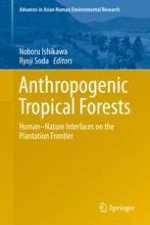2020 | OriginalPaper | Buchkapitel
15. From River to Road? Changing Living Patterns and Land Use of Inland Indigenous Peoples in Sarawak
verfasst von : Ryoji Soda, Noboru Ishikawa, Yumi Kato
Erschienen in: Anthropogenic Tropical Forests
Verlag: Springer Singapore
Aktivieren Sie unsere intelligente Suche, um passende Fachinhalte oder Patente zu finden.
Wählen Sie Textabschnitte aus um mit Künstlicher Intelligenz passenden Patente zu finden. powered by
Markieren Sie Textabschnitte, um KI-gestützt weitere passende Inhalte zu finden. powered by
